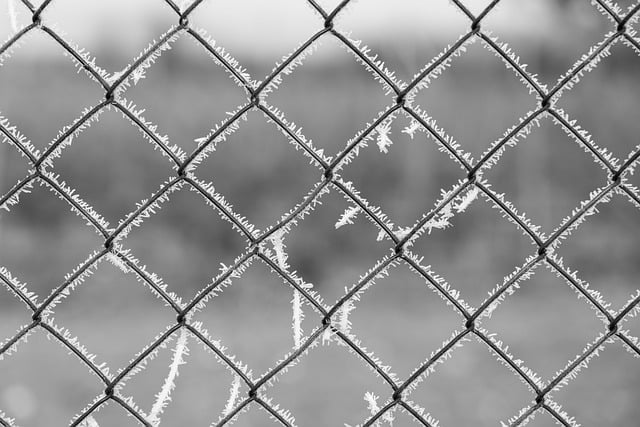Fencing is not just about demarcating spaces; it’s an investment in your property’s curb appeal. Fence staining and sealing are crucial steps to enhance the beauty and longevity of wooden fences. This comprehensive guide delves into everything you need to know, from understanding the benefits and types of fence staining to a step-by-step application process. We’ll explore how to prepare your fence, choose the perfect color, seal for protection, and maintain your fence’s aesthetics over time.
- Understanding Fence Staining: Benefits and Types
- Preparing Your Wooden Fence for Staining
- Choosing the Right Stain: Color and Formula
- Applying the Stain: Step-by-Step Guide
- Sealing for Protection: Why and How
- Maintenance Tips: Keeping Your Fence Looking New
Understanding Fence Staining: Benefits and Types
Fence staining is an art that transforms your wooden fence into a visually appealing feature, offering both aesthetic and protective advantages. By applying a stain, you can enhance the natural beauty of the wood grain while also shielding it from the elements. This process involves immersing your fence in a range of colors, from subtle neutrals to bold hues, allowing for creative expression and personalization.
There are various types of fence stains available, each with unique properties and benefits. Some stains offer long-lasting protection against water, UV rays, and fading, ensuring your fence stays vibrant for years. Water-based stains are popular for their low odor and quick drying time, making them environmentally friendly options. Oil-based stains, on the other hand, penetrate deep into the wood, enhancing its natural beauty and providing excellent durability. Understanding these types and their benefits will help you make an informed decision to achieve a stunning and long-lasting fence finish.
Preparing Your Wooden Fence for Staining
Before applying any stain or sealant, preparing your wooden fence is a crucial step in ensuring a long-lasting and attractive finish. Start by thoroughly cleaning the fence to remove dirt, dust, mildew, and other debris that can hinder adhesion. Use a pressure washer or a stiff brush with mild detergent to clean the entire surface, making sure to get into the crevices and hard-to-reach areas. Dry the fence completely after cleaning.
Next, inspect the wood for any damaged or rotten sections. Repair or replace these areas as needed to prevent further issues. Sand the fence lightly to smooth out rough spots and create a clean surface. This process also helps to open up the wood’s pores, allowing the stain to penetrate better. Remove all dust generated during sanding with a damp cloth or vacuum before proceeding to staining.
Choosing the Right Stain: Color and Formula
Choosing the right stain is a crucial step in fence staining and sealing. The first consideration is color – whether you prefer a natural, wood-toned finish or a vibrant, bold hue. Different stains offer various color options, from rich browns to deep reds and even greens. Next, understand the formula of the stain. Water-based stains are easy to apply, fast-drying, and emit fewer odors compared to oil-based alternatives. Oil-based stains, while taking longer to dry, offer better protection against fading and UV damage, making them ideal for areas with high sun exposure.
When selecting a color, consider the existing condition of your wood fence. Older, weathered fences might look best with lighter shades that enhance their natural grain, whereas new installations can handle darker colors that provide more coverage and character. Always read the product labels and follow safety guidelines during application to ensure a successful and long-lasting finish.
Applying the Stain: Step-by-Step Guide
Applying the stain is a crucial step in enhancing your wooden fence’s aesthetics and protection. Start by ensuring the fence surface is clean, free from dirt or debris. This can be achieved through thorough brushing or power washing, depending on the level of grime. Allow the fence to dry completely before proceeding.
Next, choose an appropriate time for application – ideally, a cool, overcast day when the sun isn’t blazing. Put on protective gear, including gloves and a mask, as a safety measure. Stir the stain thoroughly according to the manufacturer’s instructions. Use a brush or roller, depending on your fence’s surface, to apply an even coat of stain in one direction. Allow the first coat to dry before adding a second for enhanced depth of color.
Sealing for Protection: Why and How
Sealing is an essential step in fence staining and maintenance, offering much-needed protection for wooden fences. The primary reason to seal your fence is to shield it from the elements, including sunlight, rain, and snow, which can all contribute to wood decay and fading. By applying a protective layer, you create a barrier that repels moisture and blocks UV rays, thus prolonging the life of your fence.
The process involves using high-quality sealers specifically designed for outdoor use on wooden surfaces. These sealers penetrate the wood, filling in pores and crevices, and then form a durable, water-repellent film. Regular sealing, typically every one to two years, will ensure your fence remains vibrant, maintains its natural beauty, and stays strong against environmental factors.
Maintenance Tips: Keeping Your Fence Looking New
Regular maintenance is key to keeping your wooden fence looking new and vibrant for years to come. After staining or sealing, it’s essential to establish a consistent cleaning routine. Start by sweeping or brushing away any loose dirt, debris, or leaves that might accumulate on the fence surface. This prevents a buildup of grime that could hinder the effectiveness of your sealer or stain.
Use a mild detergent and a soft-bristled brush to gently clean the fence, focusing on areas with visible dirt or stains. Rinse thoroughly afterward and allow it to dry completely before reapplying sealers or stains as needed. Consistent cleaning not only maintains the aesthetic appeal of your fence but also extends the lifespan of its protective coating.
